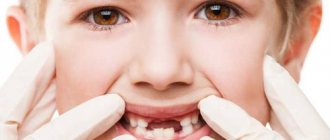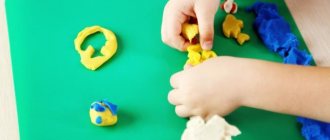Why is it important to test your child's hearing?
The risk group for the development of deafness or hearing loss at an early age includes children who have suffered from exposure to one or more factors:
- the mother suffered from certain infections during pregnancy (for example, rubella, measles, influenza);
- unfavorable course of the mother's pregnancy (preeclampsia, Rh conflict, taking antibiotics, tumor);
- disruption of the natural process of childbirth with hypoxia or injury to the fetus;
- close relatives of the baby suffer from deafness from birth or early age;
- the child was born premature and received intensive care:
- infectious diseases, sepsis, meningitis, meningoencephalitis.
In young children, hearing impairment is more often associated with the death of nerve cells (sensorineural deafness or hearing loss) or with abnormalities in the development of ear structures. With a later onset of the disease, chronic inflammatory processes, injuries, tumors, and the use of toxic drugs play an important role.
But is it worth agreeing to a routine hearing test in children if parents do not notice obvious disorders? Formally, the child’s representatives may refuse the examination, believing that the baby is completely healthy. However, mass screening studies of newborns show that half of children with identified hearing impairment do not have any factors indicating an increased risk of the disease.
A formal attitude to the examination of hearing in a baby under one year old can cause the omission of minor disorders that “bear fruit” in early and preschool age. Audiologists note that even with a mild degree of hearing loss, almost imperceptible to an adult, a child does not hear dull, hissing sounds, and perceives endings of words and prepositions worse. This causes developmental delays, speech and writing disorders.
Severe hearing loss, which occurs and is not noticed at an early age, leads to a complete absence of speech. Development is based on imitation, and if a child does not hear himself or those around him, then he cannot repeat sounds and words. Early diagnosis and prosthetic hearing aids in the first six months of life will allow such a baby to “gain” a sufficient vocabulary and avoid developmental delays.
Later hearing loss leads to increased fatigue, decreased interest in learning and, as a result, to intellectual and communication disorders.
How to test your child's hearing
Examination and identification of hearing impairment is the responsibility of an otolaryngologist, but if a disease is suspected, parents can observe the child themselves, assessing his reactions. Signs of hearing loss or deafness vary by age.
What to pay attention to and how to test your child’s hearing at home:
- a newborn or an infant up to 3-4 months does not show interest in melodious toys, does not respond to loud sounds or the mother’s voice;
- a child aged 3-6 months does not start to roar, does not look for the source of sound and does not flinch from sudden noises;
- a child of 10-12 months stops pronouncing syllables and replaces communication with gestures;
- a baby from 1 year old does not expand his vocabulary, follows instructions while looking at his mother’s face;
- a child from 1 to 3 years old does not react to words spoken in a quiet voice before he sees the speaker, approaches the source of sound with his ear, speaks loudly, distorting the words;
- a preschooler pronounces words incorrectly, misses letters, endings, prepositions, during a conversation he looks closely at the interlocutor’s face, asks again, increases the volume of the tablet, TV;
- a child 3-7 years old does not assimilate information in audio format well and is developmentally delayed;
- The student cannot cope with the program, makes many mistakes in words, complains that he does not hear what the teacher is saying, and has difficulty communicating with 2 or more interlocutors.
To assess the degree of hearing loss, you can conduct tests with cereals - peas, buckwheat and semolina. The grains are poured into a plastic resealable container (for example, from a chocolate egg). The inspector takes a jar of cereal in one hand and an empty one in the other. The study is carried out sequentially - from the quietest “sample” with semolina to the loudest one – with peas. Shake the jar of cereal at a distance of 20 cm from the right and left ears. An empty container is used for control to distinguish between turning the head towards a sound and turning the head in order to see an object.
If you suspect decreased or loss of hearing in a child, you should immediately contact an otolaryngologist or audiologist.







